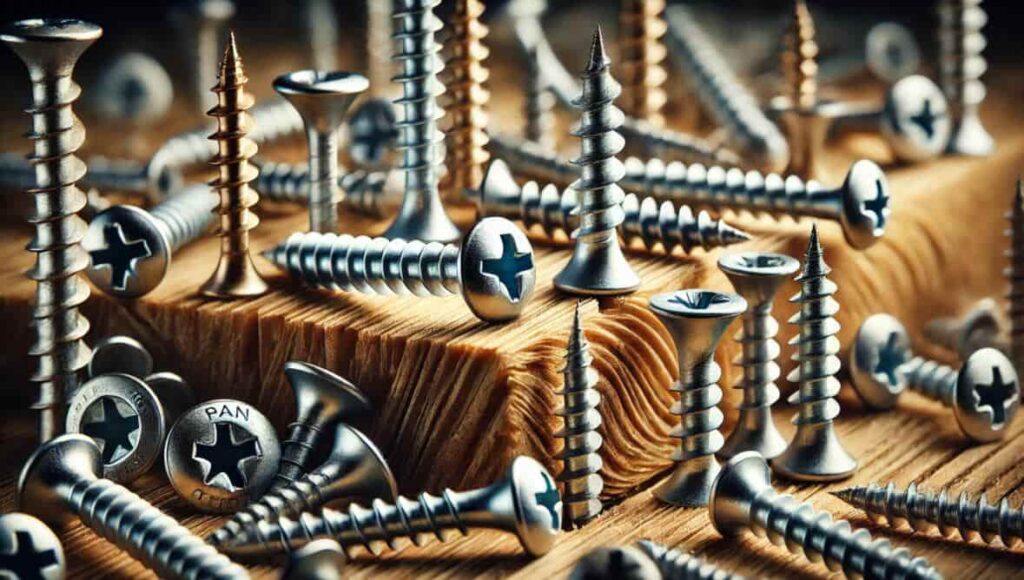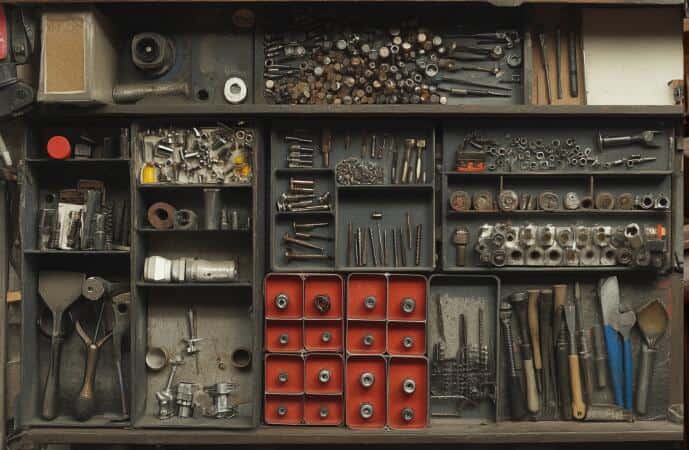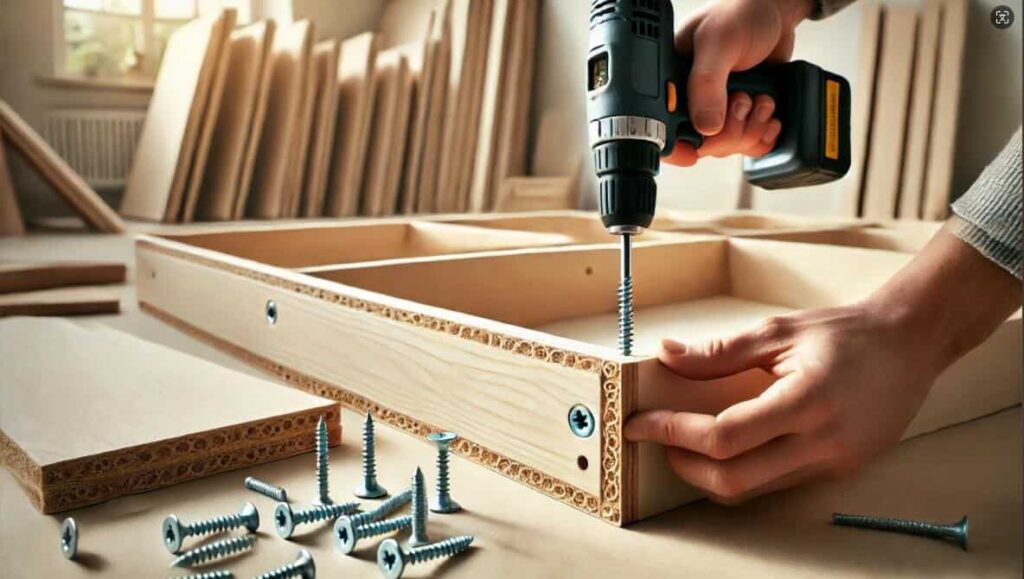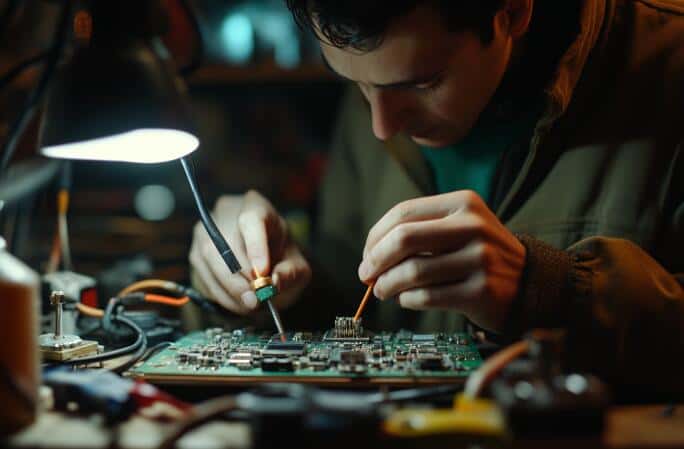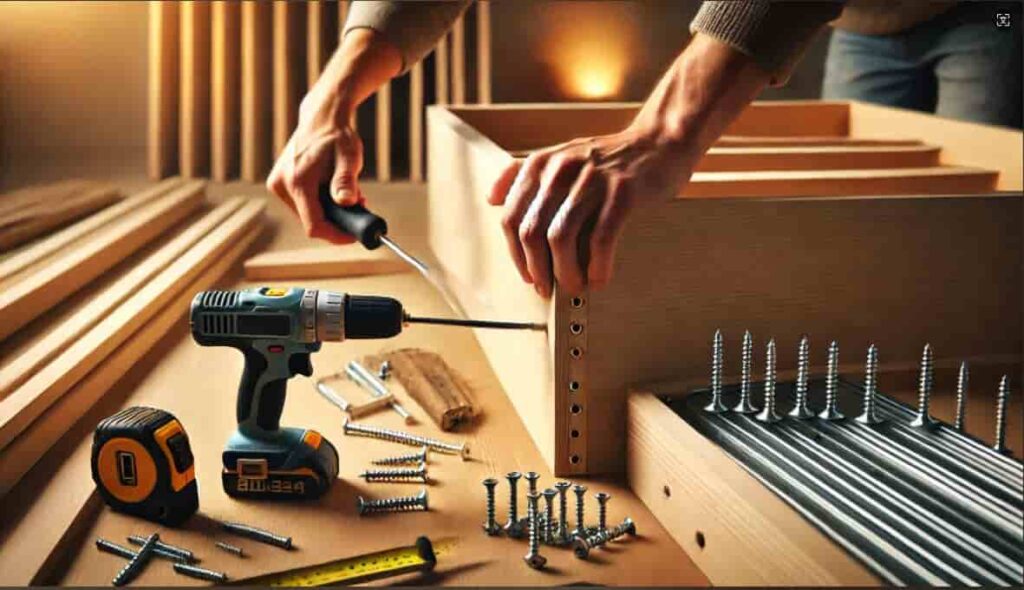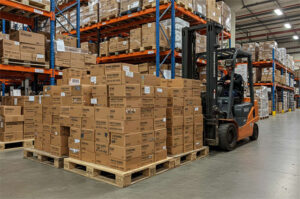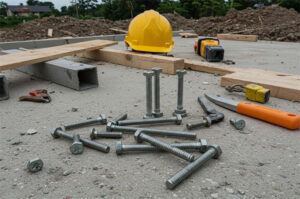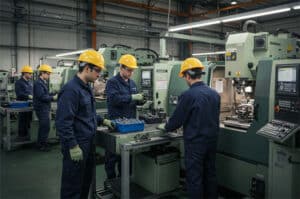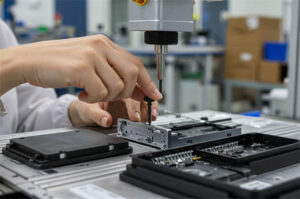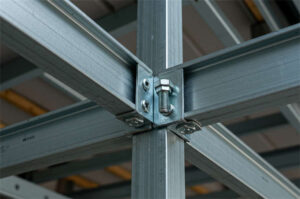The self-tapping screw, an indispensable standard component in modern industry and construction, has undergone more than 100 years of development and innovation. From the earliest iron screw design of 1914 to today’s self-drilling self-tapping screws, the design of self-tapping screws has been continuously optimized for more complex applications. In this article, we’ll take a look back at the evolution of the self-tapping screw, analyze its design principles and unique advantages, and help you better understand this critical fastener.
The History of the Self-Tapping Screw
The history of the self-tapping screw dates back to the 20th century and has gone through many important stages and evolved into the standard parts commonly used today. Below are the key stages and benefits of the evolution of the self-tapping screw.
when was the self tapper screws invented
Stages in the Evolution of Self-Tapping Screws
Screws Produce Self-Tapping Screws:
- Time: 1914
- Characteristics: The earliest design, modelled on the wood screw, was made of hardened steel with an A-shaped screw tail. The key is to connect the heating and venting system of sheet metal channel, so also known as iron screws.
Screw Milling Self-Tapping Screws:
- Time: 20th Century Era
- Characteristics: The development originated from self-tapping screws as the market demand increased. These screws are machined with drilled slots at the end of the rod, after which they are drilled and threaded to connect with themselves when screwed in, and are subsequently suitable for thicker and harder materials. In order to realize thin, strong, brittle and other materials with poor deformability, drilled slots or wounds are machined in the end of the screw. When screwing into the pre-made hole, it possesses the role of tap and actually drills the screw connected with itself.
Screw Flip Self-Tapping Screws (Self-Extruding Self-Tapping Screws):
- Time: the early 1950s
- Characteristics: At this time, engineers realized the advantages of the construction of self-tapping screws and developed them from extruded self-tapping screws. Based on a cold forged forming design, special screws and tails were built to enhance intermittent and periodic pressure above the threads and to produce a coupling thread. Low friction resistance, suitable for thick materials, improves the overall robustness of the coupling strength.
Self-Drilling Tapping Screws (Self-Drilling Screws):
- Time: early 1960s
- Characteristics: The emergence of self-drilling self-tapping screws promotes the reduction of installation costs and eliminates the need for early drilling. The design realizes cutting, attacking and tightening operations, which improves work efficiency and reduces installation costs.
In addition, there are some special designs of self-tapping screws:
- How many teeth self-tapping screws: used for plastic and other high-density materials, double-threaded design to reduce the pitch of the rotation torque, enhance the strength of drag out.
- Wall plate self-tapping screws: used to connect the cement wall plate, the surface hardness of the thread is high.
This kind of research and development process and special design promote self-tapping screws are widely used in a variety of industrial and construction. With the advancement of technology and the production of new materials, the types and main uses of self-tapping screws are still expanding.
Main Types of Self-Tapping Screws
- General self-tapping screws: the use of wide-threaded screws, the surface is susceptible to plating solutions.
- Self-cutting self-tapping screws: with the role of punching, suitable for hard materials.
- Self-extruding self-tapping screws: generally machine screws, suitable for rapid automatic assembly.
- Self-drilling self-tapping screws: no need to prefabricated holes can be directly opened and tightened.
- Wall panel self-tapping screws: specialized in the construction industry, used to connect cement wall panels.
- Fibre nails: suitable for low-strength materials such as man-made boards,WPC wall Panel.
Features of Self-Tapping Screws
- Material: Carburised steel is generally used, stainless steel or non-ferrous metals can also be used.
- Heat treatment: All commodities need to be heat treated to achieve the required process performance.
- Surface treatment: Generally through plating or phosphate to enhance corrosion resistance.
- Overall design: Includes head shape, tightening method, screw type and tailing method to meet different business needs
What is the Design Principle of Self-Tapping Screws?
The structural design of self-tapping screws is mainly based on the automatic creation of threads during screwing into the material. This type of standard fuses the roles of bolts and screw cones, and can be directly coupled with the material without prior drilling. The following is a detailed analysis of the structural design of self-tapping screws.
Self-Tapping Screw Working Principle
- Self-tapping efficiency: The top design of self-tapping screws allows them to pass through the material as they are screwed in and, in the process, drill threads in line with their own. This process is based on material movement and extrusion, promoting a smooth connection between the screw and the connecting material.
- Overall design: Self-tapping screws generally consist of a head, a shank and a tail. The head comes in a variety of shapes, commonly including hexagonal heads and chopping boards, making it easy to use different tools for distortion. The shank contains unique customized screws for different materials and primary applications.
Material and Heat Treatment:
Self-tapping screws are generally made of carburised steel, heat-treated to enhance surface hardness and core toughness. This ‘soft inside and hard outside’ characteristic ensures that self-tapping screws are less likely to break when screwed in and can be effectively drilled out of threads.
Milling and Extrusion Systems:
In self-cutting tapping screws, the tail is designed with a cutting edge. When screwed in, the wound drills out the threads instead of just extruding the material. This design promotes self-tapping screws to be made of thicker and harder materials.
Apply Diversity:
Self-tapping screws are suitable for a variety of materials, including metal, wood and plastic, widely used in different hardness and thickness materials. Especially in the construction and manufacturing industry, self-tapping screws are generally used to connect thin sheet metal, walls and other structures.
Through the above general design, self-tapping screws not only improve the assembly efficiency, but also reduce the production cost, and become an indispensable key component of modernization.
What are the National Standards for Self-Tapping Screws?
The national standards for self-tapping screws include the following:
- ISO 1478 – Specification of threads and thread ends for self-tapping screws, applicable to self-tapping screws from ST1.5 to ST9.5.
- ISO 3506-4:2009 – This standard applies to the mechanical properties of stainless steel self-tapping screws of austenitic, martensitic and ferritic steel grades.
- SAE J933 – This standard covers machine and quality standards for steel self-tapping screws suitable for use in automotive and related applications.
- SAE J78 – This standard covers dimensions and general specifications for self-drilling self-tapping screws of carbon steel, containing technical properties.
- ISO 10666 – This standard has machine and functional properties for self-tapping thread opening screws.
- ISO 14585 – This standard has the characteristics of self-tapping screws with hexagonal splined keypad heads for thread sizes ST2.9 to ST6.3.
- ISO 14586 – This standard has the characteristics of self-tapping screws with hexagonal splines and countersunk heads, for thread sizes ST2.9 to ST6.3.
These standards ensure the properties and stability of self-tapping screws in a wide range of applications in a wide range of industrial and construction sectors.
Materials and Evolution of Self-Tapping Screws
The material and design development of self-tapping screws is a major factor in a wide range of industrial and construction applications. Below are the evolution and innovations in materials and design of self-tapping screws.
Evolution of Materials
- Hardened steel vs. stainless steel: Initially, self-tapping screws were generally made of hardened steel. As materials science evolved, fastener suppliers of self-tapping screws made extensive use of high-performance materials such as hardened steel and stainless steel. Various materials not only enhance the durability of the screws, and improve the corrosion resistance of the screws, suitable for more harsh environments.
- Plastic self-tapping screws are generally 320-370HV10 hardness, very similar to grade 10.9 bolts, tooth angle of 30 °, in order to ensure the strength of the joint, easy to screw into the
Surface Treatment Technology:
Self-tapping screws are usually galvanised or phosphated to improve corrosion resistance. The new surface treatment technology makes the screws more resistant to oxidation and reduces the formation of hydrogen embrittlement.
Environmentally Friendly Materials:
With the promotion of the concept of sustainable development, researchers are developing self-tapping screws made of environmentally friendly materials. This new screw not only has better process performance, and dissolved after use, in line with the trend of green environmental protection.
Design Development
Thread Design: Self-tapping screw thread design has undergone many innovations. In order to meet the needs of different materials (such as plastic, wood, and metal), to improve the strength of the joint and reduce the rotation torque pitch.
Screws are turned into self-tapping screws (self-extruding tapping screws), raising intermittent and cyclical pressure on the top of the threaded teeth, resulting in threads that reduce friction, are suitable for thicker materials, and improve the overall robustness of the joint strength.
Self-drilling tapping screws combine hole opening, tapping, and tightening in one unit, reducing installation costs.
Unique thread design, such as multi-threaded self-tapping screws, suitable for plastics or other high-density materials. Reduced turning torque and improved drag-out strength based on double thread design.
Intelligent Technology Integration:
As the 21st century progresses, self-tapping screws are slowly integrating smart technology and putting it into sensors to monitor torque, temperature, and pressure data in real time. These smart self-tapping screws are widely used in robotics and high-end machinery, improving assembly precision and safety.
Multifunctional Design:
New designs such as drill-tailed self-tapping screws realize three-in-one hole opening, tapping, and tightening, which greatly improves the installation process and saves time and costs. This design makes self-tapping screws more efficient in construction.
Based on the Above Developments in Materials and Design, Self-Tapping Screws Have Gained Significant Improvements in Performance, Durability, and Major Applications, and Have Become an Indispensable Key Component in Modern Manufacturing and Construction.
Technological Development:
The design of plastic self-tapping screws takes into account the flexural modulus of the plastic material, the packing material, and the temperature and humidity of the environment to ensure the quality of the tightening performance.
The tightening process of plastic self-tapping screws involves positioning, screwing, and tapping and tightening the assembly. Torque manipulation is critical to avoid destruction of plastic parts due to over-tightening.
Smart Self-Tapping Screws:
In the 21st century, self-tapping screws have moved into smart technology. Engineers are integrating sensors and microelectronics into screws to create smart markers that monitor torque, temperature, pressure, and other variables in real time.
Sustainability:
With the emphasis on environmental protection, researchers and engineers are developing tapping screws made from environmentally friendly materials that are biodegradable, in line with the global trend of going green.
Surface Solutions:
Self-tapping screws often require surface protection, such as plating or phosphate (phosphating), to enhance corrosion resistance and aesthetics.
How Does Smart Technology for Self-Tapping Screws Work?
Smart technology for self-tapping screws generally involves the following:
Automatic Tightening Equipment: This equipment automatically tightens screws to improve efficiency and reduce labor costs. It generally uses advanced control systems and high-performance transmission systems to tighten screws quickly and accurately based on a preset process.
Response to the Tightening Process: Intelligent self-tapping screws equipment can be based on the tolerance of the standard and connecting parts of the universal parameter value options, to ensure that different materials and material combinations of high flexibility.
Servo Pressure Technology: Stabilization of the rate and pressure by means of a unique algorithm guarantees quality, improves the production rhythm, and saves adjustment time.
Intelligent Screw Tightening System:
This system usually includes small precision servo motors with the advantages of low noise, high speed, good low-speed performance, fume production, high efficiency, high torque accuracy, and high vibration resistance. The controller has the advantages of touch-screen human-machine interface, programmable input and output interface, large-capacity information storage, Ethernet communication, and so on.
Visual Guidance and Positioning:
The vision system is used to capture the image of the workpiece, identify the specific position of the screw holes according to image processing and machine vision algorithms, and feedback the information to the control system to regulate the positioning error of the robot.
Force Control and Torque Feedback:
The torque control system ensures that the screws are tightened by adding the right amount of torque when tightening the screws and will not be damaged due to over-tightening. Based on the six-dimensional torque sensor to get timely force feedback, intelligent torque process management.
Error Detection and Feedback:
Intelligent self-tapping screw systems can identify error conditions, such as slippery teeth, missed locks, too tight, etc., and will identify when a poor condition occurs. The system stops work and alarms immediately when a poor condition occurs to ensure product quality.
Communication and Synchronization:
Synchronization with conveyor belt, rotary table, and other external equipment to ensure that the screw machine works at the right time and position.
How to Choose the Right Standard and Specification of Self-Tapping Screws?
When selecting the standard and specification of self-tapping screws, the following key factors should be noted:
Material Type: It is important that the self-tapping screws are suitable for the type of material to be connected, such as plastic, wood, or metal. Different materials may require different types of self-tapping screws; for example, aluminum self-tapping screws should be selected with sharp and pointed cutting edge threads to prevent craters in thin metals.
Screw Type: Self-tapping screws are divided into two types: screw forming and screw turning. Screw generating self-tapping screws will cut the material caused by the screw, screw turning into a self-tapping screw according to the extruded material caused by the screw.
Screw Specifications: When selecting screws, attention should be paid to the main diameter (inches) and the corresponding speed (per minute) and lifting force (pounds). For example, #6 screw main diameter of 0.138 inches, the proposed speed of 2200 rpm, lifting force of 80 lbs.
Spiral Groove Length: The length of the spiral groove is a function of how thick the tapping screw is applied to the metal. If the spiral groove is blocked, the drilling will stop, so you should choose with the material thickness of the self-tapping screws.
Drill Length: When choosing the length of the screw, should pay attention to the length of the material. If the screw is slowly torqued before the drill bit is aligned with the material, the screw will break.
Winged and Non-Winged: Self-tapping screws with wings are used when fastening wood to metal that is thinner than 0.5 inches. The wings are perforated to prevent the screw from going in too early.
Torque and Force: Smaller diameter screws are able to withstand higher speeds but require a smaller increase in force. Conversely, the larger the screw diameter, the lower the rate, but it can lift more force!
Standards and Types: Based on the standard fasteners for the use of occasions and application functions are clear. For example, GB/T845-1985, GB/T846-1985, GBT2670.1-2004 are some of our country’s standards about self-tapping screws.
Head Shape and Twisted Way: Head shape is various, and most of the twisted way there are two kinds: external twist and internal twist. Outer twisting generally allows more twisting distance spacing.
Tail Method: Tail method is divided into two kinds: cone end and friend end. According to the application, we can choose the pipe groove, slot, notch, or the part similar to the shape of the drill bit which has the function of punching.
Comprehensive Consideration:
Considering the above factors and referring to relevant international and domestic standards can help you properly select the appropriate standard and specifications for the unique use of self-tapping screws.
The continuous innovation of self-tapping screws not only improves the assembly efficiency but also reduces the production cost, which makes them play an important role in many fields such as industry and construction. With the integration of intelligent technology and the application of environmentally friendly materials, the future application of self-tapping screws will be even broader and continue to lead the development trend of the fastener market. Choosing the right type and specification of self-tapping screws will ensure the stability and safety of projects and products.
